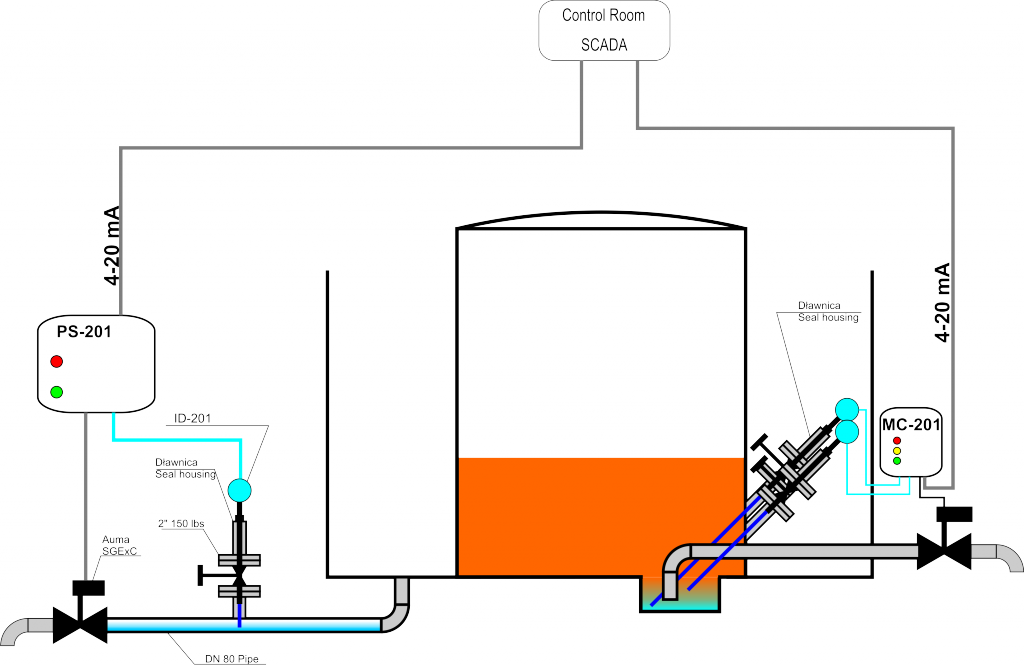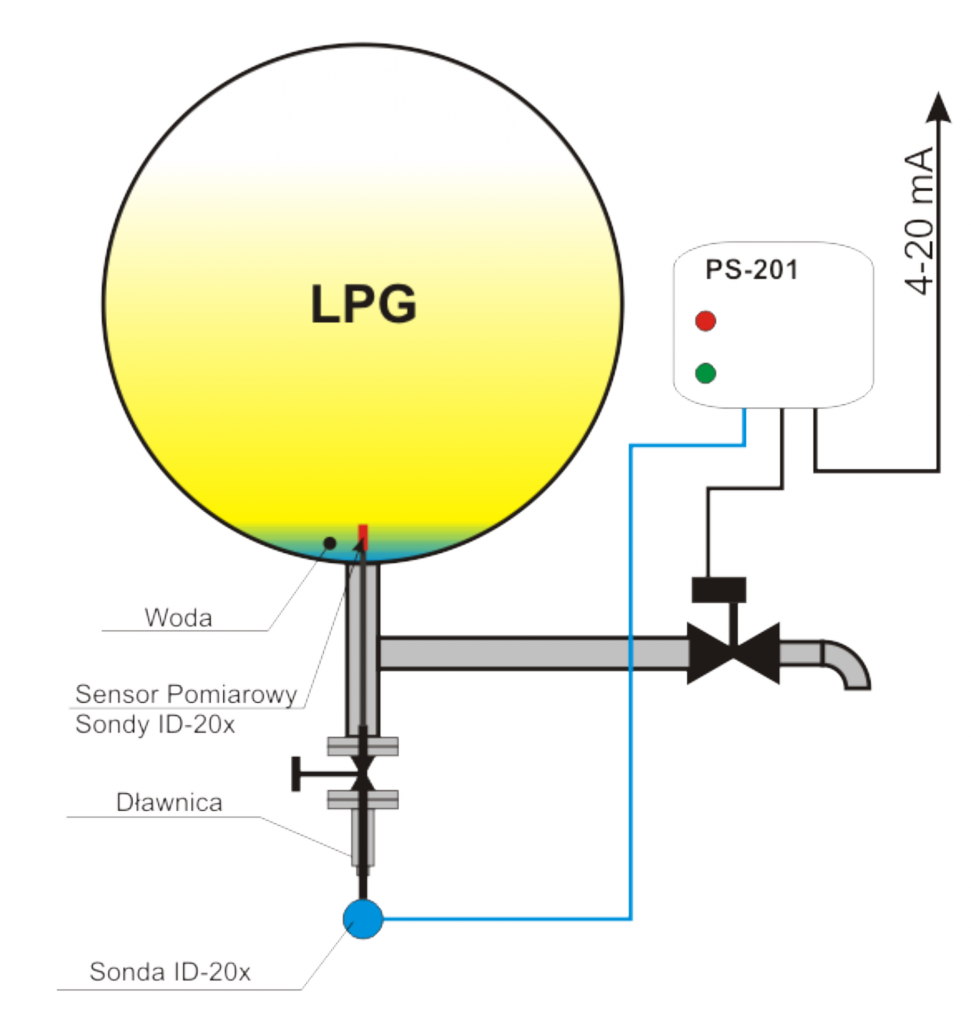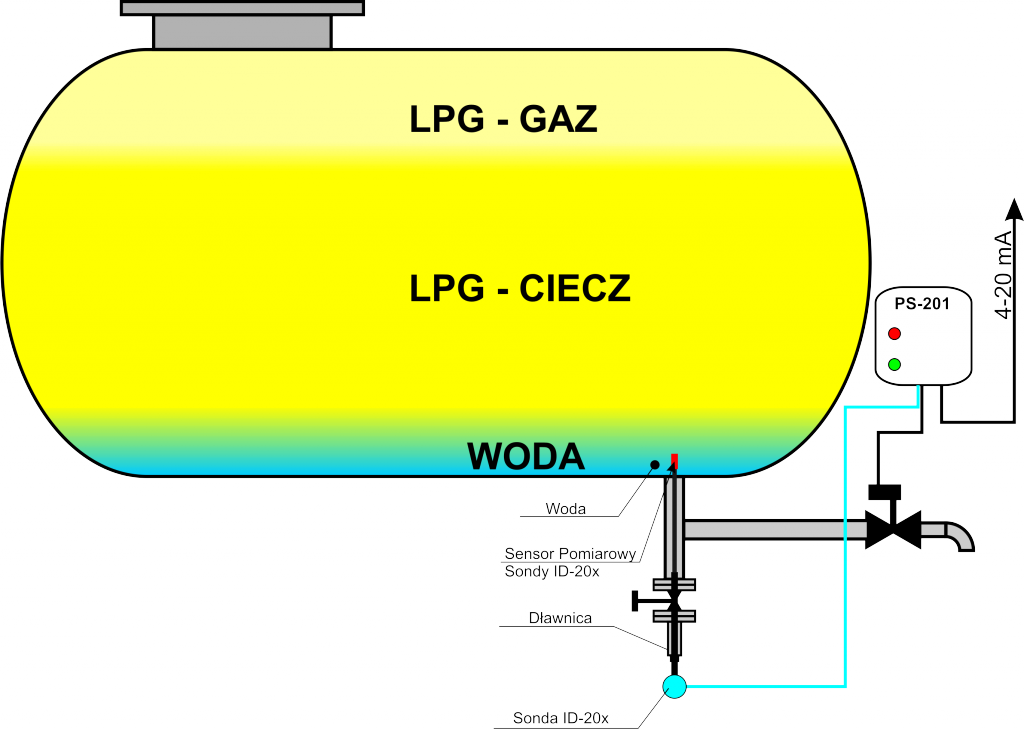Automatic dewatering system
Storage tanks containing hydrocarbon feedstocks, intermediates and finished products will, over time, accumulate a water layer in the bottom of the tank (exceptions are water-soluble hydrocarbons such as alcohols and ethers). Standard industry practice is to periodically drain the water from storage tanks so that the water does not adversely impact specifications of the hydrocarbon. Water removal also reduces corrosion problems on the floor of the tank and the risk of “Boil-Overs” in case of fire.

Manual control of water draw-off can result in HC product in the discharge. The loss of this HC product means less product available for sale and increases the cost of wastewater treatment. Additionally, environmental regulation trends (e.g., USA Benzene/NESHAP and SOCMI/HON) may impose large economic penalties for designing water draw conveyance and treatment systems that allow HC product in the water draw-off discharge.
Two types of water draw-off control approaches use the AGAR ID-200 Series Interface Detector. Each water draw discharge control strategy has its own advantages and disadvantages.
- The control strategies are:
- Using In-Tank Interface/Concentration Detectors
- Using Insertion Hydrocarbon/Water Monitors in the Effluent Water Draw-Off Line


